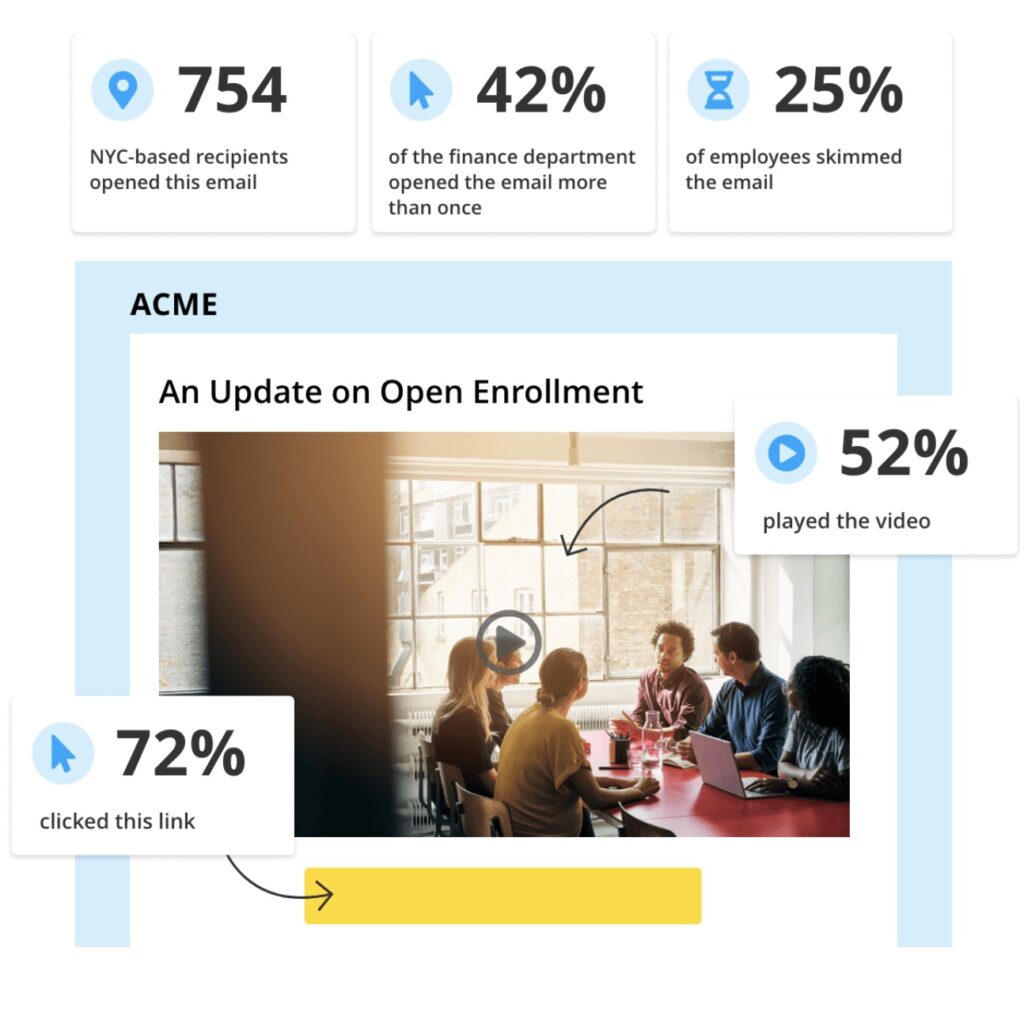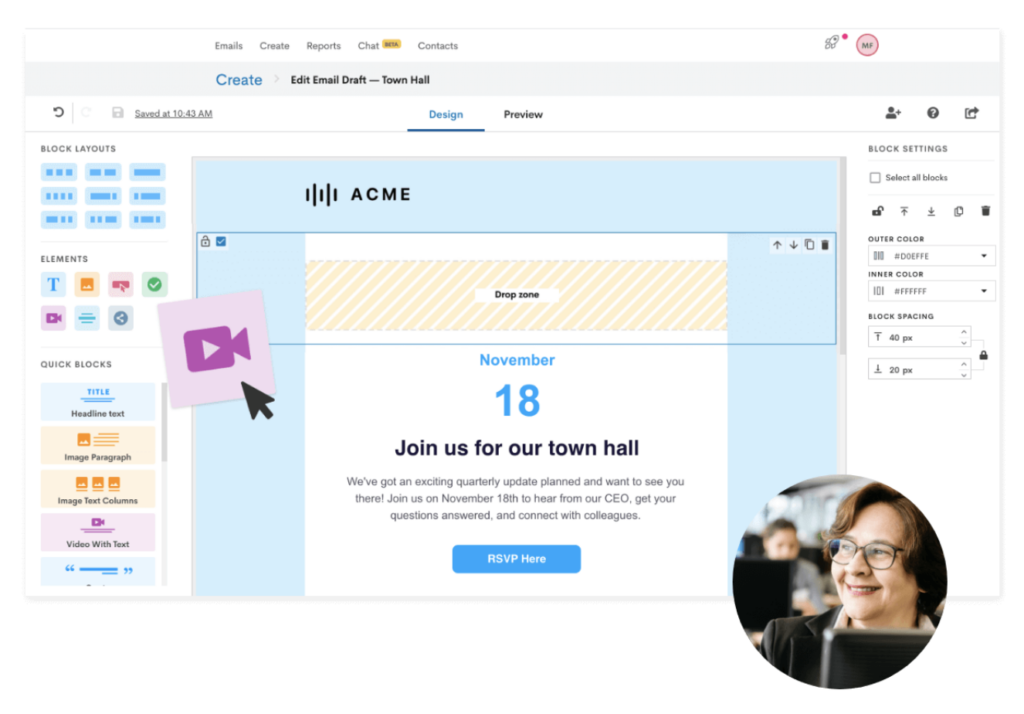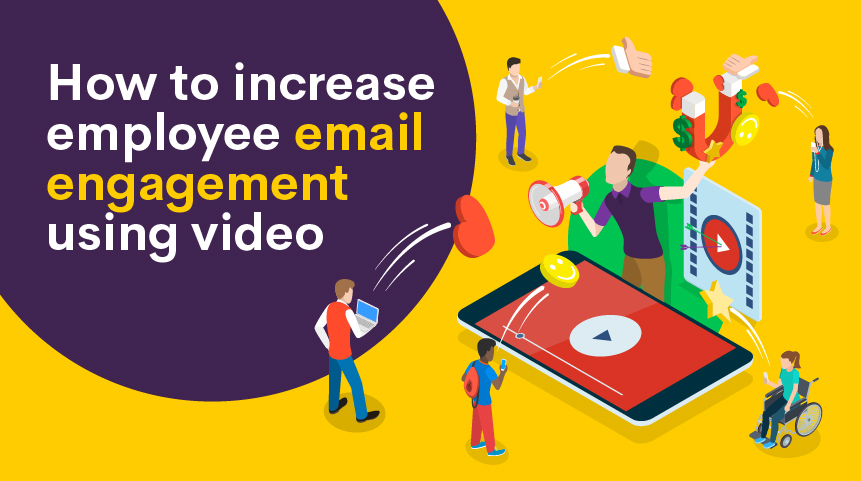This is a story from a real Staffbase Email customer. For privacy and legal reasons, they've asked not to be named, but have agreed to let us tell their story so we can inspire and help other communicators learn from their experiences.
Matt is an internal communicator at a large broadcast media company, communicating to 2000 employees dispersed across the United States.
Employee population: 2000
Industry: Media & Broadcasting
Communication channels: Outlook email, weekly newsletters
The Problem: Employee Email Engagement
With team members across different locations and time zones, Matt was struggling to get employees to pay attention.
In part, the issue seemed to be with the primary communication channel they used to reach their dispersed workforce: email.
Matt was sending a daily email for each office with a rundown of important activities employees needed to know about that were happening across the company.
And even though employees were used to receiving the daily emails from Matt, his strategy wasn’t having the impact he’d hoped for. In fact, he had no insight into whether the emails he was sending out actually had any impact at all.
"It's difficult to get employees to engage with internal comms a lot of the time — they’re busy or may not think they’ll get anything out of emails."
Matt worried that employees were skimming, or worse, simply ignoring his emails.
But without data or internal email tracking, he was basing his strategy on gut feelings.
The only way for Matt to gauge employee sentiment was by word-of-mouth. And when he heard anecdotal feedback like “well not many people read email, nobody has time for that” — he was understandably discouraged.
The Solution: An Internal Video Strategy
Matt wanted to bring life to their internal content and connect employees in a more authentic, human way. He saw that employee emails had the potential to be more effective and create a better experience for employees.
And then Matt had an idea — a brilliant idea. He was going to try a completely new approach — creating internal videos.
The marketing team was already regularly creating and publishing videos to drive awareness. He believed internal content could benefit by taking a similar path and the benefits seemed obvious.
The Power of Internal Video:
- Condense and deliver complex content in a way that’s easy to consume/remember
- Update and inform employees quickly
- Strengthen team morale by reaching employees in a more engaging format
- Put a spotlight on the company’s values, culture, and people, with a more personal medium
But as the team began to produce videos for important internal announcements and updates, they realized that it was a time-consuming endeavor. Shooting and editing required a lot more effort than making writing emails. And they needed a larger budget.
How to prove your internal video strategy is working
With the uptick in time, effort, and budget that the internal comms team was using to create their new internal videos, they ran into a big problem: there was no way to prove their video-focused approach was actually working.
They were spending countless hours and resources creating content for busy employees without actually knowing if people were watching or engaging with what they were communicating.
To convince leadership that video was a viable long-term strategy, Matt needed to prove its worth.
Using Staffbase Email to measure the impact of internal videos
Since their internal videos were being sent through email, Matt decided the best approach would be to find a way to measure engagement on those emails.
And when Matt found Staffbase Email, he knew he’d found the right fit.
The email designer allowed Matt to embed video blocks into the body of emails with no hassle. This way, employees would be more enticed to click and watch.
Using Staffbase Email's measurement features, he began to compare the click metrics between emails containing videos and those that didn’t.

As the data rolled in, it became immediately clear: the emails containing videos had far higher engagement than those that didn’t.
Some videos were hitting 600 clicks in a single day, far exceeding his expectations.
“Now we know we aren’t wasting our time making videos that nobody wants to watch.”
Using data to optimize your video communications strategy
For the first time, Matt had insight into how employees were engaging with internal content. The available data was a revelation, and it opened up opportunities to dive deeper and keep improving their new strategy.
"Having the numbers to back up these new techniques and strategies proved that video is a worthwhile and valuable pursuit."
Matt felt empowered and was excited to experiment with more ideas for video content. With Staffbase Email, he knew he’d be able to check in on what was working well and what wasn’t, so he could keep improving his communications.
In fact, with this new tracking and data insight, Matt began to compare engagement rates by which time of day he was sending, as well as the frequency of video-based emails. He was able to see which videos got the most attention and when, so he could take his internal email and video strategy to the next level.

In the end, the shift to video worked wonders for Matt’s overall communications strategy.
Video content provided a much-needed human element to reinvigorate engagement with their internal comms and turned out to be the best medium for communicating about company culture.
But the success of the new video strategy wouldn’t have been possible without the insights from internal email data.
Backed by numbers, Matt was able to move away from a “that’s the way it’s always been done” approach, and pursue more effective ways to deliver important content to their employees.




